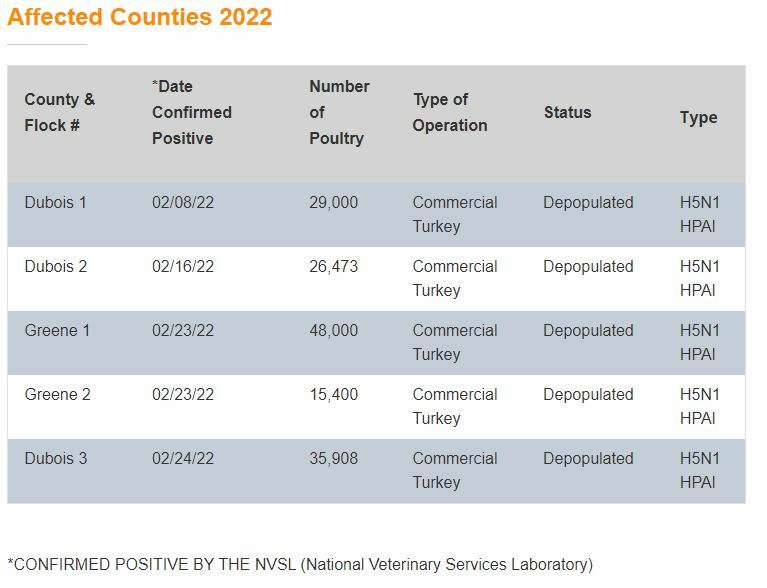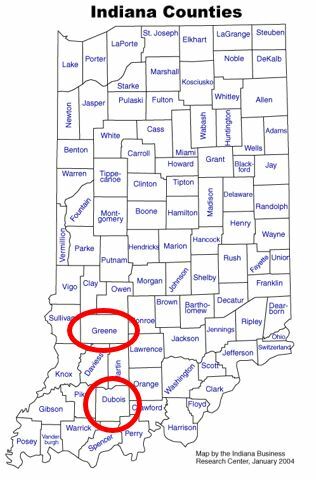



Indiana's state veterinarian updates on HPAI outbreak
Dr. Bret Marsh, Indiana State Veterinarian, speaks exclusively with The Poultry site about his state's HPAI outbreak
Dr. Bret Marsh, Indiana State Veterinarian, spoke with The Poultry Site’s Sarah Mikesell in an exclusive interview about the Highly Pathogenic Avian Influenza (HPAI) outbreak in Indiana.
Can give us an update on what you are experiencing with HPAI in Indiana?
At this point, we have five cases in only two counties, and they are all on turkey farms. The companies have been very responsive, and they've brought in their own equipment and their own people to depopulate animals at those sites. We did utilize USDA contract personnel and equipment on a couple of sites to finish the job, but that proactive stance has really made a huge difference for us because it gets those infected sites depopulated quickly. Then we can start what we call the virus elimination steps on that site. In addition, we have a 10-kilometer area identifying where the commercial birds are. We've been doing ongoing testing on a weekly basis on those commercial sites, and that's actually where we picked up a couple of other infected sites - right there in the control area.

Are all five sites commercial operations?
Yes, they are all commercial operations. Because all the birds have been depopulated, and the compost is capped, so we can start the time towards the completion of that process. The randomness of the virus is challenging. These are sites with good biosecurity. And again, they're turkey sites so not a lot of traffic. It's not like you're coming in to pick up eggs every day or something like that. So, with limited traffic, we're wondering what we have missed and we're continuing to evaluate that. We're the number one state in duck production; number two in eggs and laying hens; and number three in turkeys. So, we've got a lot of poultry in Indiana that are susceptible to this disease and others.

Was there any movement of animals from these five positive operations recently?
Generally, the turkey poults are placed on the farm and grow up there. There’s very little movement on and off the site. That's what makes it especially perplexing to try and figure out what's causing the outbreak. There are owners/caretakers, some technical service staff and feed delivery but that's about it. We are trying to figure out exactly how and why the virus got introduced, and in a totally random pattern.
There was no movement of animals recently off any of the five operations. Once the first site tested positive, there was no movement in the area around that farm. There was a quarantine and depopulation on the site, then we started testing the area around it.
As I mentioned, the turkey companies are already moving turkeys early to reduce the number of susceptible animals in the area.
Have you tested feed on the positive farms and found HPAI?
Not for HPAI. There’s been some studies with regard to the survivability of African swine fever (ASF) in feeds, but we haven't found that to be the case with HPAI, which is an advantage. But nonetheless, we're trying to leave no stone unturned on what other possibilities might exist. We’ve brought in the Department of Natural Resources and USDA Wildlife Services to test wild migratory waterfowl. They're in the area, so we've asked them also to test starlings or anything in the area that may be moving this virus around that could help us get an edge on it.
Do you feel like you've identified all the positive operations or are there still more to be diagnosed?
We have to be prepared for any eventuality. Again, we had five cases in less than two weeks. I think we've gone maybe four or five days now without a new case. We take it one day at a time. We also get concerned with, for example, a backyard flock diagnosed in Kalamazoo County, Michigan, that's just a county away. There's only one county between the Indiana line and Kalamazoo County, Michigan. We have a lot of poultry in northern Indiana including broilers and other poultry. So again, it's one day at a time, but the awareness among the veterinary community and poultry producers has never been higher, so everyone's on high alert.
When it comes to backyard poultry, have you identified those flocks?
Under Indiana law even commercial sites are not required to be registered, but they've given us their premise IDs. With that information, we can respond in advance that we have something like this, which has been hugely helpful. With backyard flocks, the exhibition community has been involved – so if you want to show a chicken or whatever, then they register those sites. When we cut the perimeter circles, we've been able to identify up to 30 backyard flocks that were already pre-registered. It may not be all of them but it's pretty good and we’ve been encouraged. Then we'll canvas the area looking for others as well. Once identified, we test those backyard flocks twice. The backyard folks are as passionate about their birds as anyone else. They're happy to cooperate, and we give them advance notice we're coming around.
Are you investigating the cause of the HPAI outbreak?
These are not range birds. They're not outside; they are in-house situations. One of the things that has been an advantage for us is that the operations monitor water consumption. Sometimes even before the birds are clinical, if you see a 50% to 80%, drop in water consumption, that may be the metric we use to identify disease. Those types of metrics have been really helpful to try and stay ahead of it. Some of these sites were diagnosed before they were even clinical, so that's helped us get ahead of the curve.
It’s an ongoing investigation, and we are doing an epidemiological investigation on each of those sites to see if there are any commonalities - anything that's unique about those sites. We had reports, for example, that there have been a lot of starlings in the area. So, we’ve written that into the equation. We also take a look at wind patterns, - is there dust, dander, debris, moving anything? We're trying to take a look at all those possibilities, because if it's coming with migratory waterfowl, we know what's in the area, and we have to presume they're infected and do everything we can to keep it out of the commercial sites.
Are migratory birds the primary path that you would see HPAI enter a flock?
Correct – it’s introduced to those areas because of migratory waterfowl. We’ve had great cooperation from our US Department of Natural Resources, USDA Wildlife Services. They're doing testing now to determine what's going on.
Testing of migratory birds has been ongoing for more than a decade in the US. Sometimes you see a shift depending upon the flyways. The Central and Mississippi flyway isn't one of the primary testing areas; it's been more on the Atlantic coast. But with our case, everything kind of shifted our direction, so they've ramped up to see what's here. And in addition to the virus type we have, are there others out there?
We feel for these producers who get impacted and have lost their production animals. Fortunately, the producers do get indemnity from USDA, and hopefully we can get them back in business as soon as we can.









